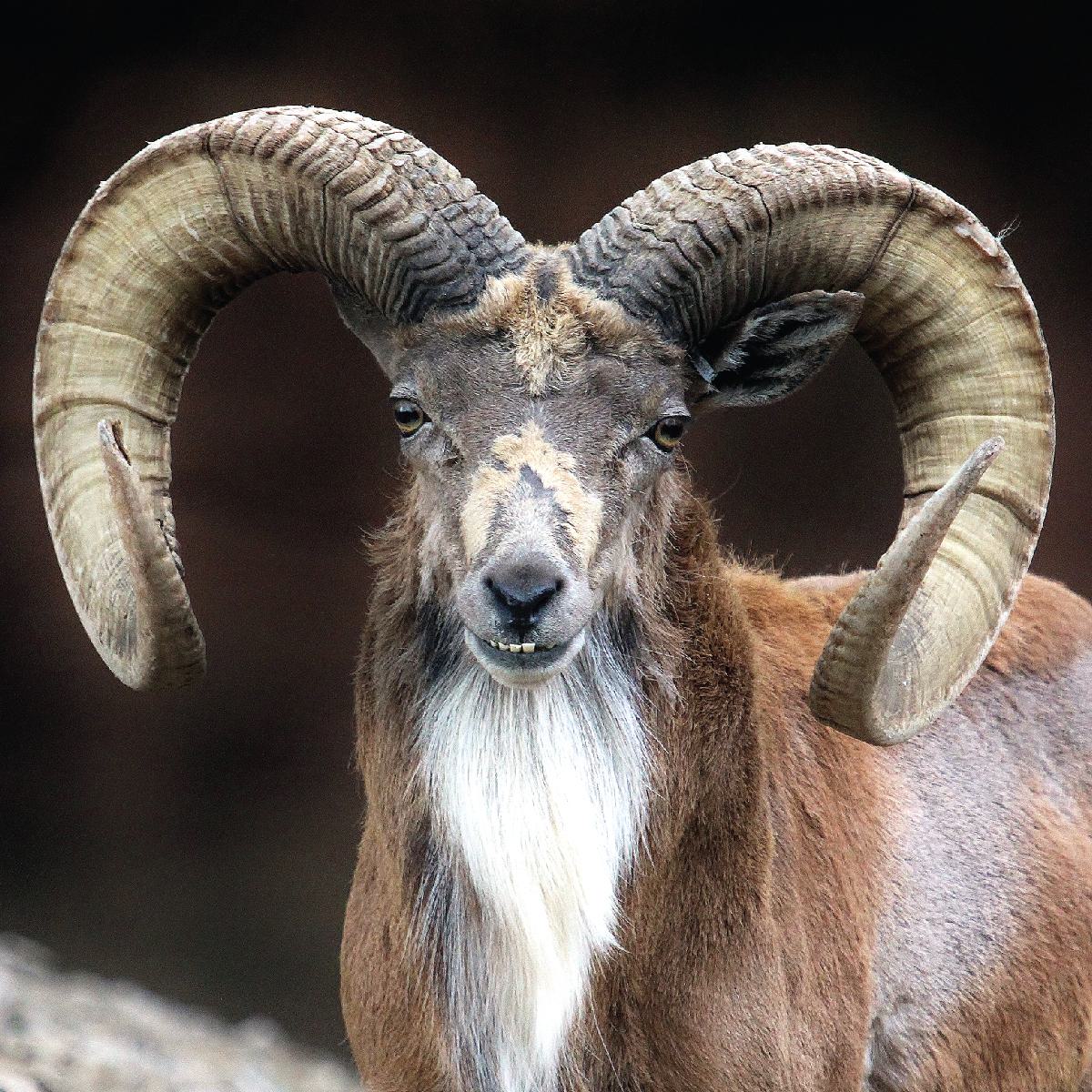
Transcaspian Urial
Ovis aries arkal
Did you know?
- Transcaspian urials are part of the Caprinae family, which they share with bison and buffalo.
- They are a type of mouflon, or wild sheep, and the ancestors of domesticated sheep.
- They live in grasslands in northern India, Iran and nearby areas.
- Male Transcaspian urials are referred to as rams.
- A female can birth up to three offspring at a time.
Out in the Open
Transcaspian urials live in open rolling terrain where they feed primarily on grass. They are usually fast enough to escape from their natural predators, wolves and leopards. They are fast and agile climbers, and they find strength in fleeing from predators and living in herds.
Social Structure
Transcaspian urials live in herds, typically with a dominant male and multiple females. There is a strict dominance hierarchy among rams based on their age and the size of their massive curling horns; the ram with the biggest horns is the leader. Rams will struggle for dominance through pushing each other. Often, they will one another, back away, rear up on their hind legs and crash their horns together.
Threat Level
- Unknown
- Common
- Near Threatened
- Threatened
- Endangered
- Critically Endangered
- Extinct in the Wild
Vulnerable
The Transcaspian Urial faces a high risk of extinction in the wild.
Range
Northern India to Iran
Habitat
Grasslands

We care about transcaspian urials
The Zoo supports a family of Transcaspian urials in Red Rocks. Learn more about how we helping wildlife around the world.
Find this animal in Red Rocks

SAINT LOUIS ZOO ZONE
Red Rocks
At Red Rocks, you’ll view some of the world’s most powerful predators living near some of the world’s most graceful prey. Lions, tigers, zebra and giraffes all share the natural rocky boulders and outcroppings as their territory. With shading trees and a bird or two among the mammals, Red Rocks is a great place to spend a day at the Saint Louis Zoo.

